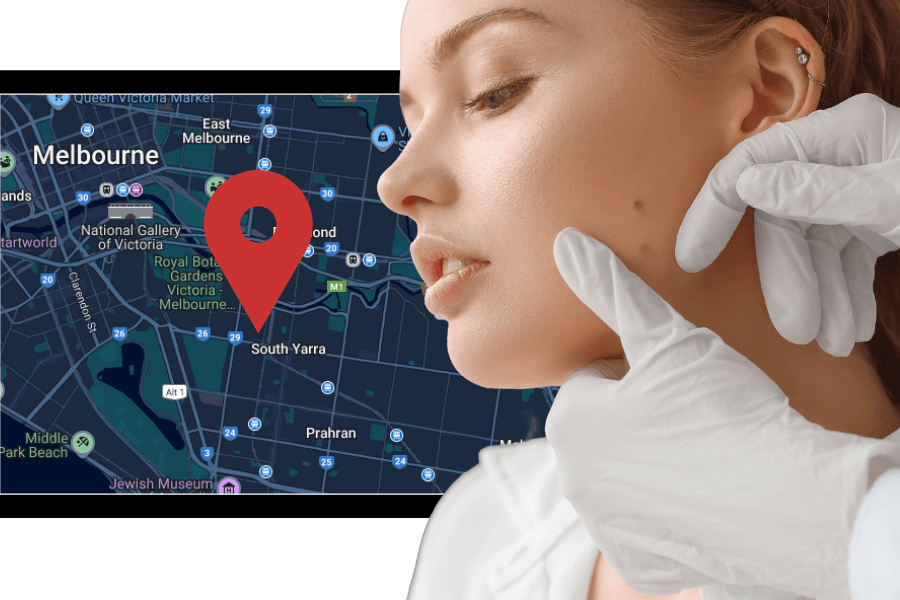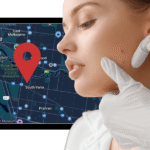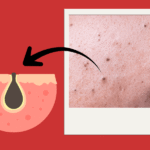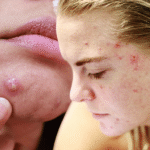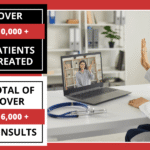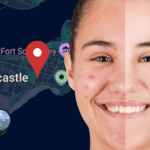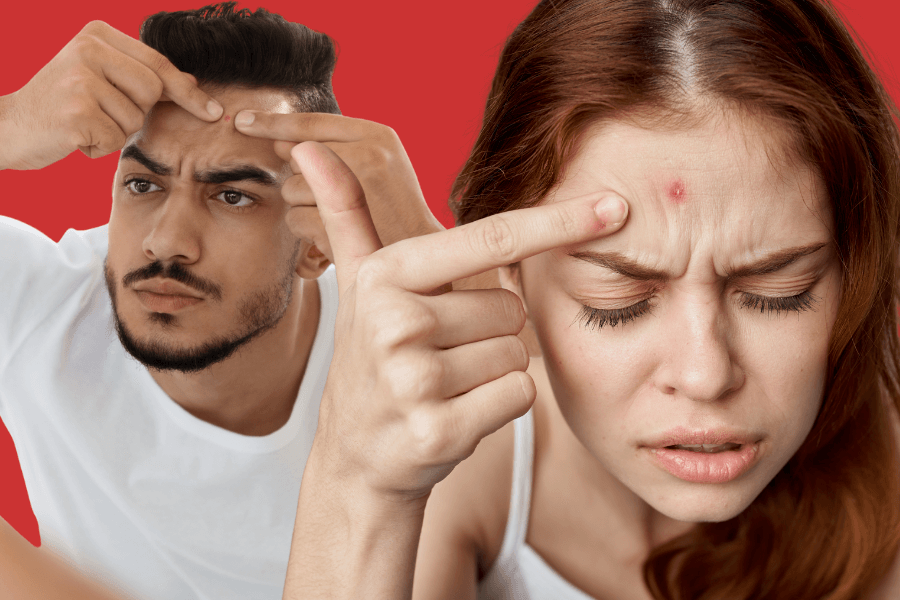
Why do I get pimples on my forehead? Honestly, if you’re asking this while staring at yet another breakout in the bathroom mirror, you’re not alone. Forehead acne’s weirdly specific—like, why there and not somewhere else?
The whole thing feels personal too. Rest of your face might be fine, maybe a pimple here or there, but your forehead? That’s where the party’s happening, apparently. And it’s the one bit of your face you can’t exactly hide unless you’re committed to wearing a beanie year-round (which, let’s be honest, just makes things worse).
There’s actual science behind why foreheads cop it more than other areas. Understanding that makes sorting it out way less frustrating.
What’s different about your forehead anyway
Your forehead sits in the T-zone. Sounds made up, but it’s real—forehead, nose, chin. This strip across your face has more oil glands packed in than anywhere else. More glands pumping out sebum means more chance of blocked pores.
But there’s more to it than just oil. Think about what your forehead deals with daily. Fringe hanging over it. Sweat dripping down from your hairline during exercise. Hands propping up your head during boring meetings. Baseball caps. Beanies. That gross headband you use at the gym.
All of this stuff touching your forehead constantly? Yeah, that’s creating problems.
Stress shows up on foreheads first too, which is just cruel really. Bad week at work, relationship drama, money worries—doesn’t matter what’s stressing you out, your forehead’s broadcasting it to the world before you’ve even processed it yourself.
What’s actually behind those breakouts
Multiple things gang up on your forehead. Rarely just one culprit.
Hair products top the list, and most people don’t even realise. That styling mousse, leave-in treatment, or whatever you’re running through your hair? It migrates. Gravity pulls it down onto your forehead, or it transfers when you touch your hair then touch your face. These products are loaded with oils and silicones that absolutely wreck pores.
Even shampoo and conditioner cause issues. Rinsing them out in the shower means they run down your face. If you’re not washing your face after showering, you’re basically leaving residue all over your forehead.
Headwear’s another massive problem. Caps, beanies, cycling helmets—anything sitting tight against your forehead traps sweat and bacteria underneath. You’re creating a warm, moist environment where bacteria throw a party. Sports people get this constantly. There’s even a name for it: acne mechanica. Basically means friction and pressure causing zits.
Hormones do whatever they want regardless of your plans. When androgen levels spike, oil glands go mental. Forehead usually gets hit first. This is why breakouts follow patterns—same time every month for women, or flare-ups during particularly stressful periods when cortisol’s elevated.
What you’re eating might be making it worse. Not the old "chocolate causes pimples" nonsense—that’s been debunked. But high-GI foods definitely matter. White bread, lollies, soft drink, that sort of thing. They spike your blood sugar, which triggers insulin, which tells your skin to produce more oil. Some people react badly to dairy too, though that’s not everyone.
Stress creates a vicious cycle. Cortisol spikes when you’re stressed. Cortisol triggers oil production. Oil clogs pores. Pimples appear. Then you stress about the pimples, which creates more cortisol, which… you get the idea.
Your skincare routine could be sabotaging you. Using harsh cleansers strips your skin, making it panic and overproduce oil to compensate. Or you’re using something too heavy that’s suffocating your pores. Even expensive "good" products can be completely wrong for your skin.
Different pimple situations need different approaches
Knowing what type of pimple you’re dealing with matters heaps.
Blackheads and whiteheads are entry-level acne. Blocked pores, basically. Blackheads look dark because they’re open and the gunk inside oxidizes—it’s not dirt, despite what your nan might’ve told you. Whiteheads are the same thing but closed over. Both respond well to basic treatments.
Red, angry pimples are papules and pustules. Papules are those hard, sore bumps under the skin. Pustules are when they develop that gross white head full of pus. These hurt way more and stick around longer. They’re inflammatory, which means your immune system’s involved.
Deep, painful lumps under the skin are cystic acne or nodules. These are serious inflammatory acne. They don’t come to a head like regular pimples. They just sit there being painful and taking weeks to disappear. If you’re getting these often, stop mucking around with drugstore products and see someone who knows what they’re doing.
Fungal acne throws everyone off because it looks like acne but isn’t. Tiny, uniform bumps that might itch. Regular acne treatments do absolutely nothing because it’s not bacteria—it’s yeast overgrowth. Needs antifungal treatment, which is why proper diagnosis matters.
Sorting out forehead pimples
So you’ve got them. Now what?
Washing your face properly is step one. Twice a day, gentle cleanser. Nothing with microbeads or harsh scrubbing action—that just irritates everything. If you wear makeup or use heavy sunscreen, clean your face twice at night. First with an oil cleanser or micellar water, then with your regular cleanser. Sounds excessive but it actually works.
Salicylic acid gets into pores and clears them out from the inside. Game changer for blackheads and preventing new pimples. Use it in a cleanser or as a leave-on treatment. Don’t go crazy with it though—few times a week is plenty. Your skin still needs some oil to function.
Benzoyl peroxide helps reduce the bacteria involved in inflammatory acne and can be effective for many people with red, angry pimples. Start with 2.5% or 5%—jumping straight to 10% usually just burns your face for no extra benefit. Warning: it bleaches fabric, so say goodbye to any colored pillowcases or towels it touches.
Retinoids are where things get serious. These vitamin A derivatives speed up how fast your skin sheds dead cells, stopping pores from clogging. You can buy adapalene over the counter (Differin’s the common brand). Prescription ones are stronger. They work exceptionally well but expect a "purging" phase where everything gets worse temporarily. Stick with it.
Moisturizer seems counterintuitive for oily skin, but skip it and you’re making things worse. Dehydrated skin overproduces oil trying to fix itself. Get a lightweight, oil-free moisturizer. Gel textures work well. Your skin needs hydration even if it’s drowning in sebum.
Spot treatments help in emergencies. Big date tomorrow and a massive pimple’s appeared? Dab on some high-strength benzoyl peroxide or salicylic acid before bed. Those hydrocolloid patches are brilliant too—stick one on, it sucks out the gunk and stops you picking at it.
When DIY stops cutting it
Twelve weeks of trying drugstore products with no improvement? Time to escalate.
Seeing a dermatologist used to mean waiting months for an appointment. Now services like Acne Express let you consult online and get prescription treatments posted to you. Proper game changer for people who don’t have time to sit in waiting rooms.
Dermatologists can prescribe the heavy-duty stuff. Prescription retinoids that are way stronger than anything you’ll buy in Chemist Warehouse. Oral antibiotics to calm inflammation from the inside. Hormonal treatments like spironolactone, which works brilliantly for women whose acne’s hormone-driven.
For severe cases, isotretinoin (Accutane) exists. It can be highly effective for many people with severe acne, though it involves careful medical supervision and potential side effects. It’s intense—monthly blood tests, potential side effects, the whole deal—but it genuinely cures acne for most people. Not something to take lightly, but if nothing else works, it’s worth discussing.
Chemical peels and laser treatments help too, particularly if you’re dealing with scarring from old breakouts.
Stopping pimples before they start
Prevention beats treatment every time. Less painful, less expensive, better for your mental health.
Get your hair off your forehead whenever possible. Fringe needs washing regularly. Apply styling products away from your hairline. At night, tie everything back so your hair’s not rubbing your forehead for eight hours.
Wash things that touch your forehead. Hats. Headbands. Your phone screen (yes, really—it’s disgusting). Pillowcases weekly minimum, more if you’re breaking out. Your pillowcase collects oil, dead skin, drool, product residue—it’s basically a bacteria farm after a few nights.
Stop touching your face. Easier said than done, but your hands carry bacteria and oil everywhere. Definitely don’t squeeze pimples. That just spreads infection, causes scarring, and often creates more breakouts around the original one.
Check every product touching your face is non-comedogenic. Makeup, sunscreen, moisturizer—everything. And yeah, you absolutely need sunscreen, especially using treatments that make skin sun-sensitive. Just get an oil-free one designed for faces.
Pay attention to diet and stress patterns. You don’t need to become a monk, but notice if certain foods trigger breakouts. Pizza and beer Friday followed by Sunday morning pimples? Might be a connection. Same with stress—find ways to manage it that actually work for you. Your skin reflects your internal state more than you’d think.
Stick with routines long enough to work. Nothing fixes acne overnight. Give new products 6-8 weeks minimum before deciding they’re useless. Constantly switching products usually makes everything worse because you’re never giving anything a proper chance.
Look, here’s the reality
Forehead pimples are ridiculously common and ridiculously annoying. Your forehead makes more oil, cops more exposure to problem-causing stuff during the day, and reacts to hormones and stress faster than other areas. Add hair products and headwear and you’ve basically got a perfect storm.
But they’re not some mysterious curse. Once you figure out your specific triggers, you can actually fix it. Might be simple—different shampoo, cleaner pillowcases. Might need stronger treatments from a dermatologist through something like Acne Express. Usually it’s a combination.
Don’t let forehead acne run your life. Clear skin’s genuinely achievable, whether you sort it yourself or get professional help. With the right approach, many people see significant improvement, whether through professional treatment.
Disclaimer: This article is for informational purposes only and does not constitute medical advice, diagnosis, or treatment. The information provided should not be used as a substitute for professional medical advice from a qualified healthcare provider. Teledermatology services have limitations and may not be appropriate for all skin conditions. Some conditions require in-person examination, physical assessment, or procedures that cannot be performed remotely. Always seek the advice of a qualified dermatologist or other healthcare provider with any questions regarding a medical condition. Never disregard professional medical advice or delay seeking it because of information you have read in this article. If you think you may have a medical emergency, call your doctor or emergency services immediately.

